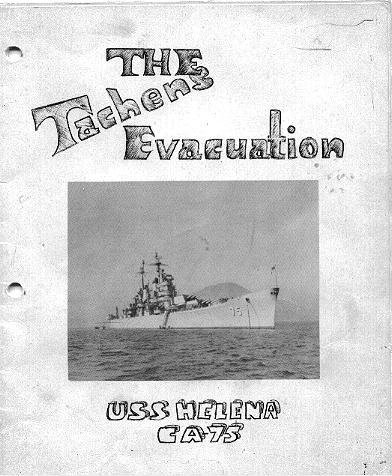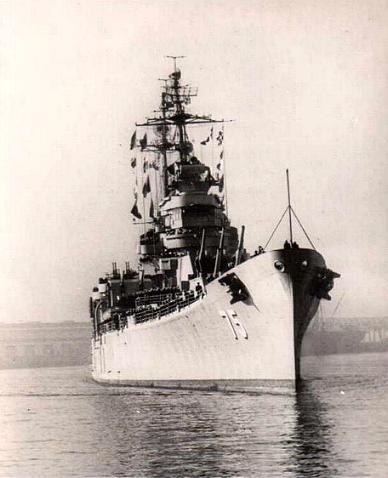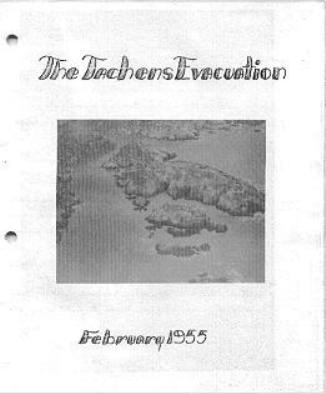
Page 1 |
FORWARD
In 1945, when the rest of the world was jubilant over the
end of World War II the Chinese Communists resumed their pre-war
rebellion against the legal government of China. China became
torn by Civil War in the years that followed, until in 1949
Generalissimo Chaing Kia-Shek was forced to evacuate to Formosa
and other off-shore islands
Here his forces remained safe behind the protection of the
Nationalist Chinese Fleet and the U. S. 7th Fleet, until late
1945 when Red forces began concentrating attacks upon the Tachen
Islands. A decision had to be made. Should we help the Nationalists
defend the islands, or should we help them evacuate the
territory? Either choice was likely to set off World War III.
On 6 February 1955 President Eisenhower ordered the U.S.
7th Fleet to assit the Nationalist Government of the Republic
of China in the evacuation from Tachen of 20,000 troops and
18,000 civilians.
Page 2 |
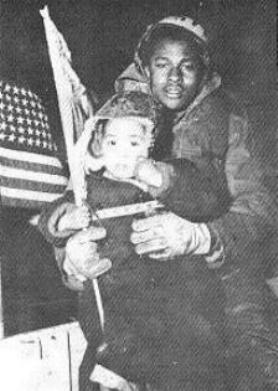
Page 3 |
24 January to 5 February 1955
The usually quiet harbor of Keelung gradually filled with
ships of every type. Every pier was full, every buoy occupied
while in the outer harbor destroyers escorts and mine sweepers
rolled at anchor.
As final preparations were made, checked, and rechecked,
the Communist air and gunfire assaults on the Tachen Islands
were continuing and the time for decision was near. Afloat and
ashore, all eyes were on the heavy cruiser HELENA, flagship of
the U. S. 7th Fleet.
Across the HELENA'S quarterdeck came leading U.S. and
Chinese officials to confer with Vice Admiral alfred M. Pride,
Com 7th Fleet. All available spaces were being used for conferences
as the staff officers confered with advisors, Nationalist officials
and fleet representatives
HELENA'S ship's company was as busy as the Flag. Boats of
every description made her accommodation ladder carrying officers
and men seeking help from the flagship's ET's and other
technicians who gave advice and visited other vessels to bring
equipment up to peak performance. Storekeepers searched their
bins and provided quantities of needed spare parts and supplies.
The galley provided meals for men in transit; every one was
working to increase the preparedness of a battle-ready fleet.
Page 4 |
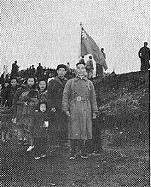
Meanwhile HELENA's own equipment was being maintained at
top performance. Daily checks and drills sharpened the skills
of gunners, fire control and director officers. In the engine
room the steam was up, and everyone was on a 4 hour standby.
The "Queen of the Cruisers" was ready.
6 February 1955
The sun had barely risen over Formosa's hills when the
shrill whistle of the Boatswain's pipe brought HELENA awake with
a start. A day of holiday routine had turned to a day of excitement,
Page 5 |
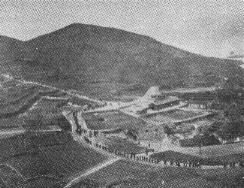
for HELENA was getting underway at once. Her mission:
the protection of the forces evacuating the Tachen Islands.
When told by Captain F. M. Adamson that almost immediately
four boiler operation was needed, Lt. T. A. Whitlock, Engineering
Officer, stated, "Captain, you just point her, we'll get her
there!" and the Engineers lived up to the promise, for 3 hours
and 14 minutes after receiving her sailing orders, HELENA was
cutting her way northward at 30 knots through the stormy China Sea
In the early afternoon HELENA reported to Rear Admiral
Ralph E. Wilson, Commander Task Force 75. While HELENA
and her sister, the TOLEDO, with the destroyers,
ISBELL, KNOX, OSBOURN, and HOLLISTER
Page 6
|
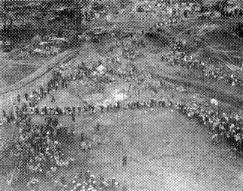
were patrolling the eastern shores of the Tachens
and planes from Task Force 77 were patrolling westward, the
amphibious forces of Task Force 76 moved into the evacuation area.
7 February 1955
The harsh clanging of the general alarm had barely stopped when the
"manned and ready" reports from all stations began arriving on the bridge.
The time of action was here and all hands were ready.
Lookouts carefully scanned the skies as the sun
broke slowly over the horizon, showing the small, dark brown islands
which were the HELENA's destination: the Tachens.
From 0445 to 0700 all stations were manned as Task Force 75
Page 7 |
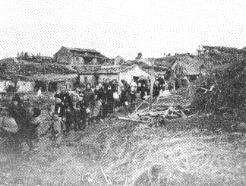
moved in to protect the amphibious forces which had already begun
the long arduous evacuation.
HELENA's role was that of gunfire support ship and
antiaircraft defense ship. As the day passed HELENA shifted
anchorages several times, using channels carefully cleared by
Chinese Nationalist minesweepers.
At one time, HELENA was within close range of heavily armed
Communist "Pyramid Isle." Observers on the signal bridge could
see the Communist gun emplacements on the islands. However,
HELENA's main battery was prepared too, for condition II was set
all through the day.
Meanwhile, on the islands the heart breaking process of
Page 8
|
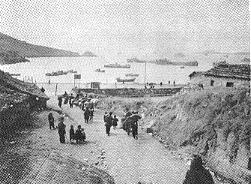
evacuation was beginning as the small villages were divided into
neighborhood groups, each with its own leader. Every leader
carried a flag and often a picture of Chiang Kai-Shek. Slowly
the groups gathered in the alley-like streets and began
leaving the homes of their ancestors behind. Stumbling under
the bundles they carried (each person was allowed to take 100
lbs. of "home" with him) family joined family as they traveled
down the steep hillsides. Soon, on the beachheads long lines of
quiet people stood waiting for their ride to freedom.
The oriental faces remained impassive as one man died from
disease and another slumped to the ground after a serious
heart attack, for each man had worries of his own.
Page 9 |
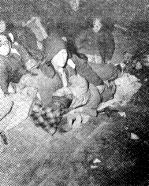
Throught the day and far into the night LCMs and LCUs
pounded through the choppy, muddy water from ship to shore and
back again carring these brave people and their meager possessions
to the waiting transports.In the waters around the islands careful patrols searched
in ever widening circles for any Communist interlopers. On the
masts the radar antennas swept the air constantly, on guard against
enemy aircraft. As the sun set, HELENA's AA gun crews huddled together
for warmth. Condition III had been set and the all night vigil began.
Page 10 |
